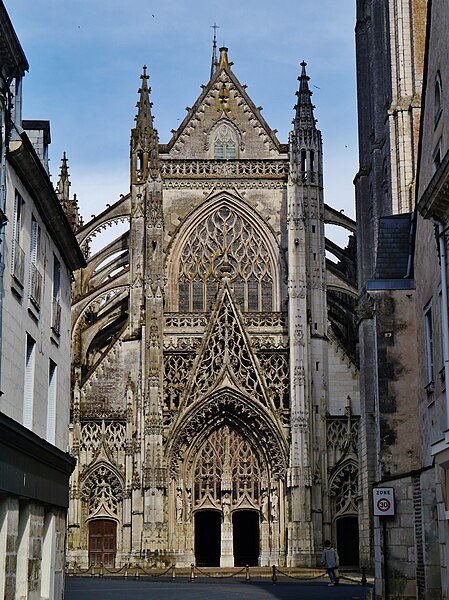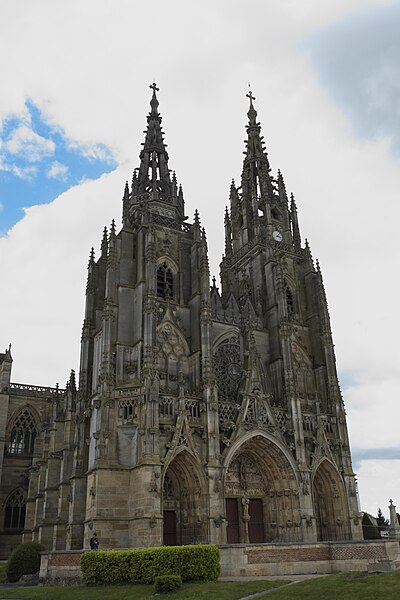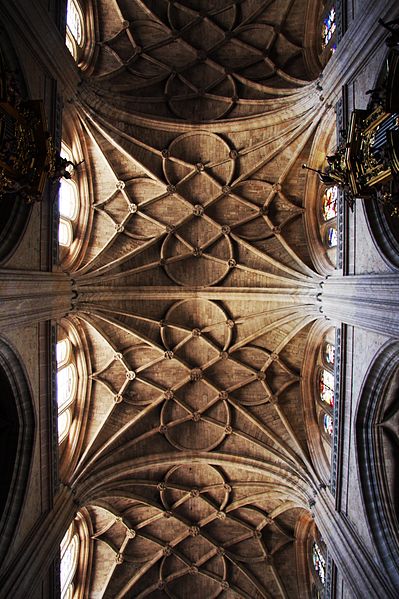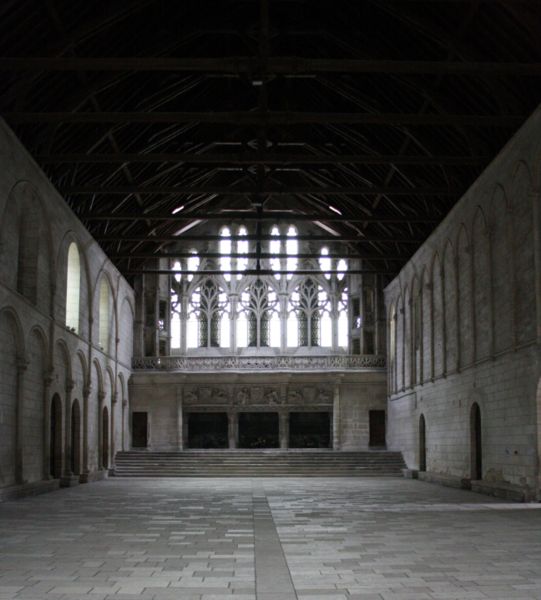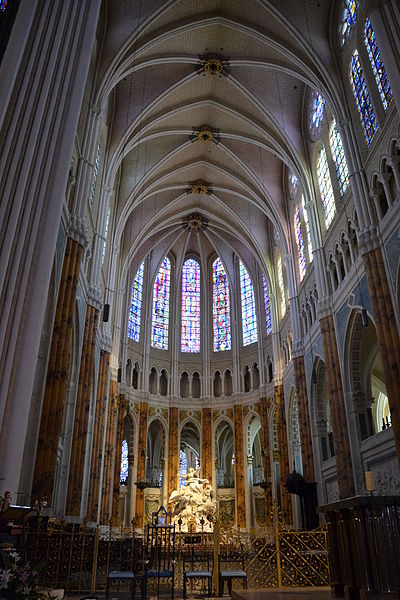Flamboyant is a lavishly-decorated style of Gothic architecture that appeared in France and Spain in the 15th century, and lasted until the mid-sixteenth century and the beginning of the Renaissance. Elaborate stone tracery covered both the exterior and the interior. Windows were decorated with a characteristic s-shaped curve. Masonry wall space was reduced further as windows grew even larger. Major examples included the northern spire of Chartres Cathedral, Trinity Abbey, Vendôme, and Burgos Cathedral and Segovia Cathedral in Spain.
Facade of the Trinity Abbey, Vendôme (about 1250)
Notre-Dame de l'Épine, west front (1405–1527)
Flamboyant rib vaulting of Segovia Cathedral, nave (1525–1577)
Flamboyant openwork tracery, fireplace and chimney, Salle des pas perdus, Palace of Poitiers (c. 1390)
Chartres Cathedral, also known as the Cathedral of Our Lady of Chartres, is a Catholic church in Chartres, France, about 80 km southwest of Paris, and is the seat of the Bishop of Chartres. Mostly constructed between 1194 and 1220, it stands on the site of at least five cathedrals that have occupied the site since the Diocese of Chartres was formed as an episcopal see in the 4th century. It is one of the best-known and most influential examples of High Gothic and Classic Gothic architecture,
It stands on Romanesque basements, while its north spire is more recent (1507–1513) and is built in the more ornate Flamboyant style.
Image: Facade cathedral
Image: Chartres Cathédrale (2012.01) 08
Image: Chartres Cathédrale 16
Image: Cenral tympanum Chartres

